Leaders of the Revolutionary War were the national heroes of the early republic. Soldiers of the war cherished memories of serving with George Washington. They delighted in sharing stories of fighting under Nathanael Greene or Francis Marion. They revered the memory of Joseph Warren and Richard Montgomery, who sacrificed their lives for American liberty.
Other Americans—those who lived far from the contending armies or were too young to remember the war—learned to revere the heroes of the Revolutionary War by listening to the stories of veterans, repeated and often embellished as they were told and retold. They also learned about the heroes of the Revolutionary War through books and prints aimed at a popular audience.
Remembering the Revolutionaries: Heroes of the Revolutionary War in American Culture, 1783-1863, drew together books, prints and other objects from the Institute’s collections illustrating how ordinary Americans remembered the heroes of the Revolutionary War and how those memories evolved during the eighty years between the Revolutionary War and the Civil War. As the Revolutionary War passed out of the memory of living men and women, these books and prints played an increasingly important role in shaping how Americans imagined the heroes who secured our national independence.
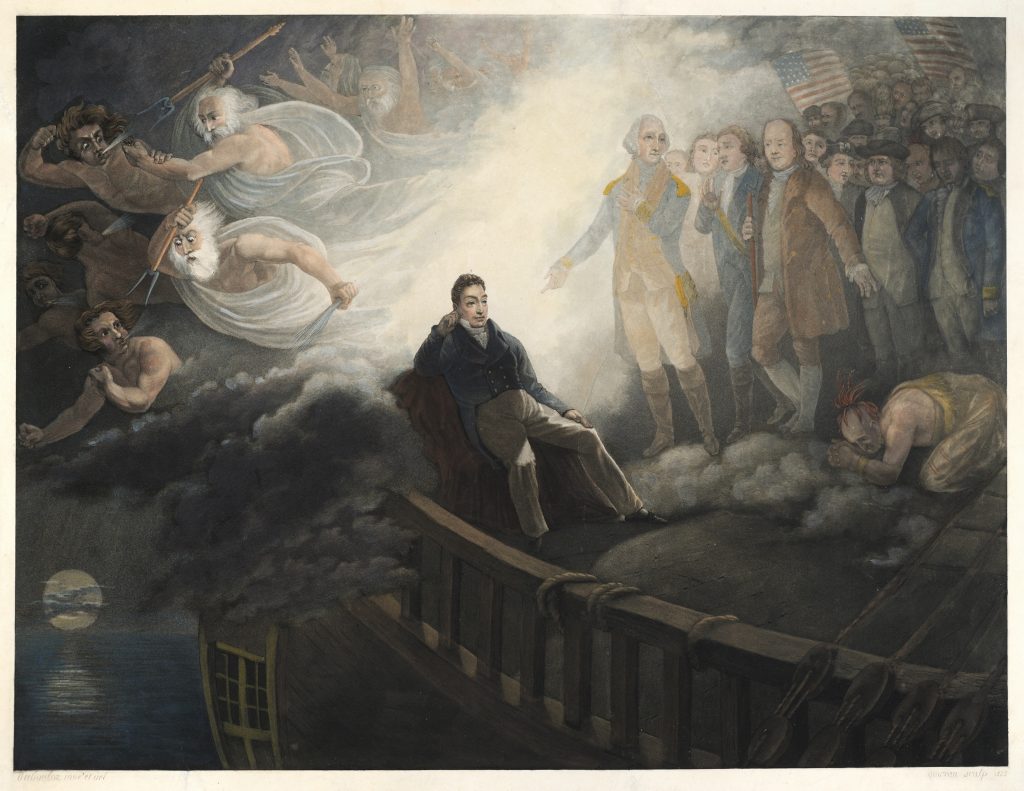
Le Général Lafayette
Achille Moreau, engraver; after Jean Auguste Dubouloz, artist
1825The Society of the Cincinnati, The Robert Charles Lawrence Fergusson Collection
Lafayette’s triumphal tour of the United States in 1824-1825 focused the attention of Americans on the heroes of the Revolutionary War and confirmed Lafayette’s own place among them. In this allegorical image of Lafayette’s return voyage to France in 1825 on board the frigate Brandywine, the old general remembers the heroes who achieved American independence.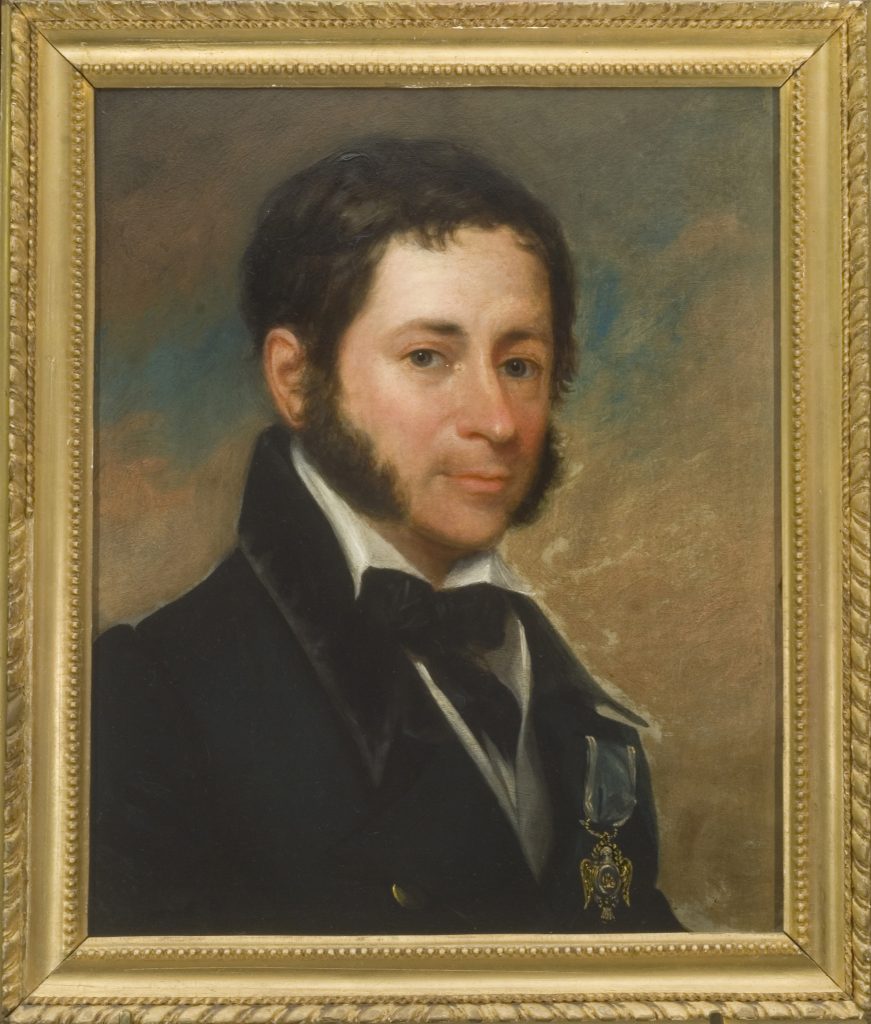
James St. Clair Caldwell
ca. 1826The Society of the Cincinnati, Gift of Dr. and Mrs. William R. Baker, 2009
James St. Clair Caldwell (1791-1853) was named after Arthur St. Clair, the general under whom his father served. Caldwell was proud of this personal connection to the Revolutionary War and succeeded his father as a member of the Society of the Cincinnati in 1826. This oil portrait, which was painted about that time, depicts him wearing the insignia of the Society. Naming children after Revolutionary War heroes was a common practice in the generations between the Revolution and the Civil War and is one measure of the importance of those heroes to American culture during those decades. The names of George Washington, Francis Marion and Lafayette were the most frequently bestowed.![Click for a larger view. A History of the Life and Death, Virtues and Exploits of General George Washington, Mason Locke Weems, Philadelphia: Re-printed by John Bioren, for the author, [1800]](https://www.americanrevolutioninstitute.org/wp-content/uploads/2018/08/Weems-Life-of-Washington-L2007F179-622x1024.jpg)
A History of the Life and Death, Virtues and Exploits of General George Washington
Mason Locke Weems
Philadelphia: Re-printed by John Bioren, for the author, [1800]The Society of the Cincinnati, The Robert Charles Lawrence Fergusson Collection
Americans were familiar with Washington’s public life, but they knew little about his private life until Mason Locke Weems (1759-1825), an Episcopal minister and itinerant book peddler, published his Life of Washington shortly after Washington’s death. Weems’ Life of Washington became the most widely read book about the Revolutionary War published in the nineteenth century.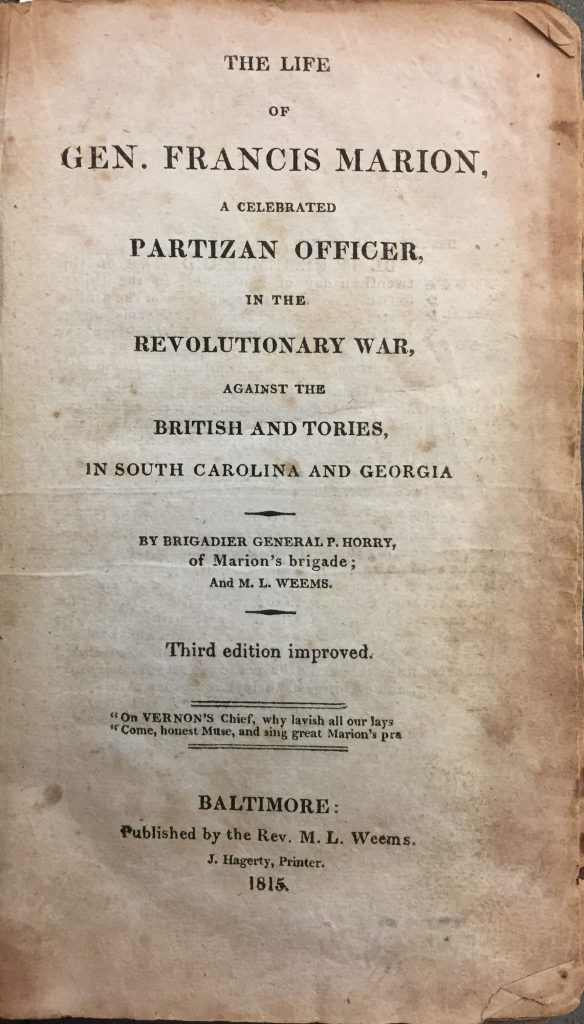
The Life of Gen. Francis Marion; a Celebrated Partizan Officer, in the Revolutionary War, against the British and Tories in South Carolina and Georgia
Mason Locke Weems and Peter Horry
Baltimore: Published by the Rev. M. L. Weems; J. Hagerty, Printer, 1815The Society of the Cincinnati, The Robert Charles Lawrence Fergusson Collection
The source of Francis Marion’s national fame was Mason Locke Weems’ Life of Francis Marion. First published in 1809 and repeatedly expanded by its author, it was continuously in print in inexpensive editions for generations.![Click for a larger view. Gen. Marion in His Swamp Encampment Inviting a British Officer to Dinner, John Sartain, engraver; after John Blake White, artist, [New York]: Printed by John Dalton for the Apollo Association for the Promotion of the Fine Arts in the U.S., 1840](https://www.americanrevolutioninstitute.org/wp-content/uploads/2018/08/General-Marion-in-his-Swamp-Encampment-PE-L2013F36f-1024x920.jpg)
Gen. Marion in His Swamp Encampment Inviting a British Officer to Dinner
John Sartain, engraver; after John Blake White, artist
[New York]: Printed by John Dalton for the Apollo Association for the Promotion of the Fine Arts in the U.S., 1840The Society of the Cincinnati, The Robert Charles Lawrence Fergusson Collection
The most famous anecdote in Mason Locke Weems’ Life of Marion describes the visit of a British officer to Marion’s camp to negotiate a prisoner exchange. According to Weems, Marion offered to share his simple dinner of roasted sweet potatoes and water with his guest. John Blake White’s depiction of the scene was duplicated in popular prints and inexpensive books, making it one of the most familiar images of the Revolutionary War in the middle years of the century.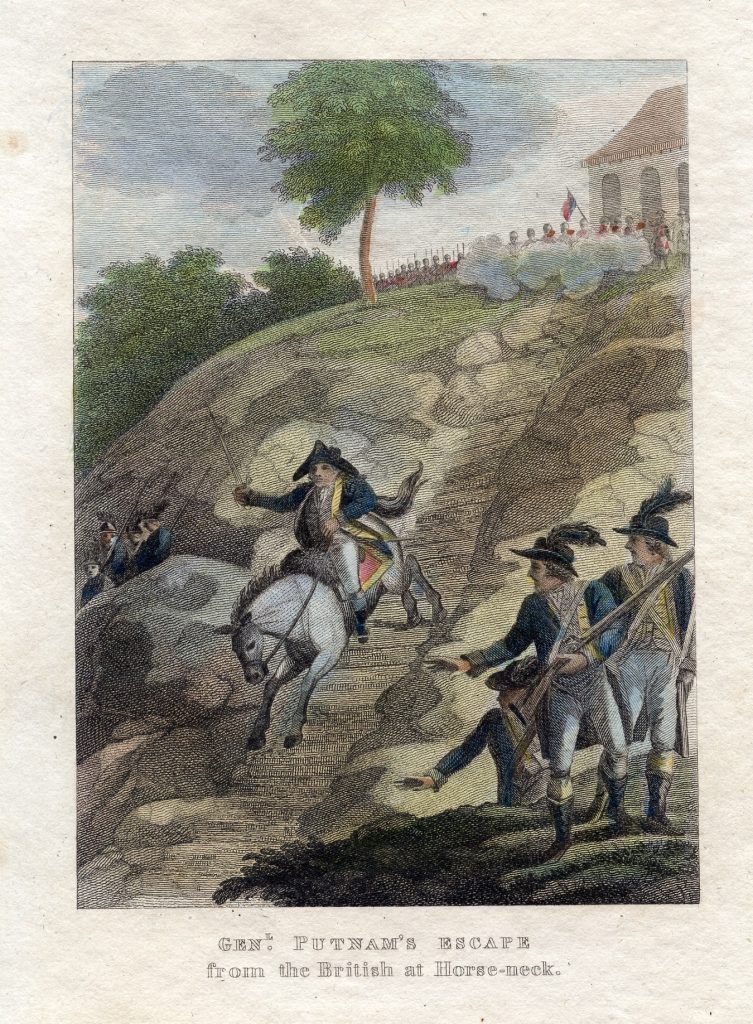
“Genl. Putnam’s Escape from the British at Horse-neck”
American Military Biography; Containing the Lives, Characters, and Anecdotes of the Officers of the Revolution
Hartford: Printed for the Subscribers; Roberts & Burr, Printers, 1825The Society of the Cincinnati, The Robert Charles Lawrence Fergusson Collection
Americans remembered Israel Putnam for his matchless courage, a characteristic demonstrated in his daring escape from a British cavalry patrol in February 1779. Putnam escaped by spurring his horse down an impossibly steep hill at Horseneck in the town of Greenwich, Connecticut. Lafayette, who remembered meeting Putnam in 1777, visited the site of Putnam’s escape when he toured the United States in 1824-1825.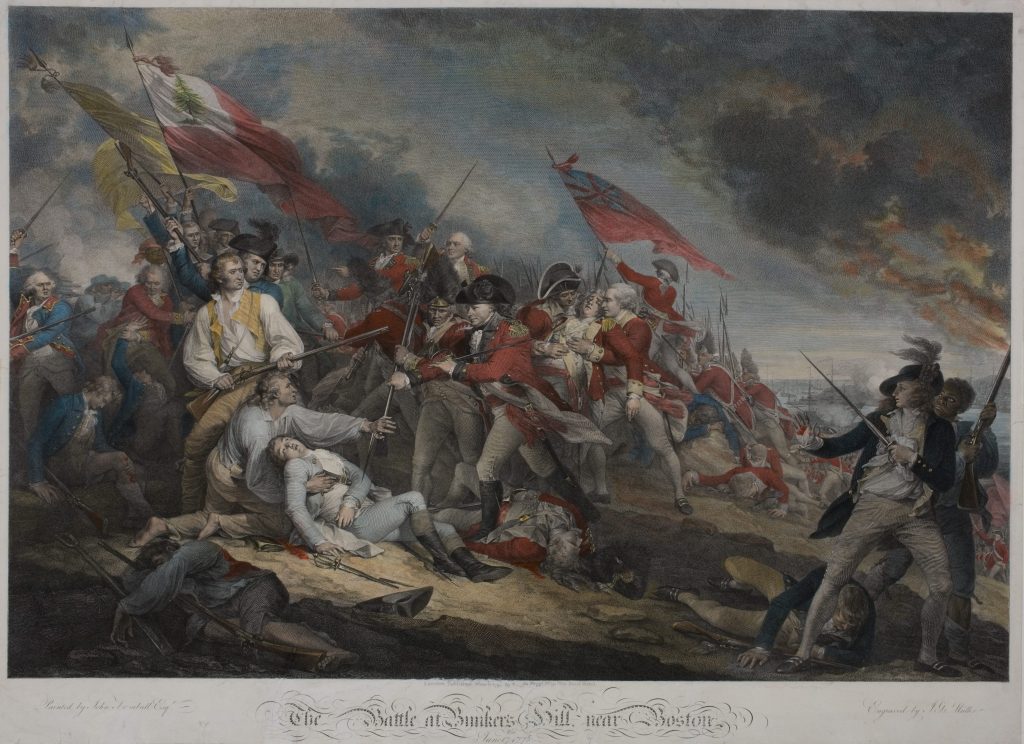
The Battle at Bunkers Hill, near Boston the June 17th 1775
Johann Gotthard von Müller, engraver; after John Trumbull, artist
London: Antonio C. de Poggi, 1798The Society of the Cincinnati, The Walter P. Swain, Jr., Memorial Collection; Gift of Philip S. Keeler, Jr., 1998
John Trumbull’s painting of the Battle of Bunker Hill was widely reproduced, beginning with this fine engraving published in 1798. Hundreds of printed versions, from subtle mezzotints to simple wood engravings, quickly made this the most familiar image of a Revolutionary War battle and one of the most well-known depictions of battle in American history.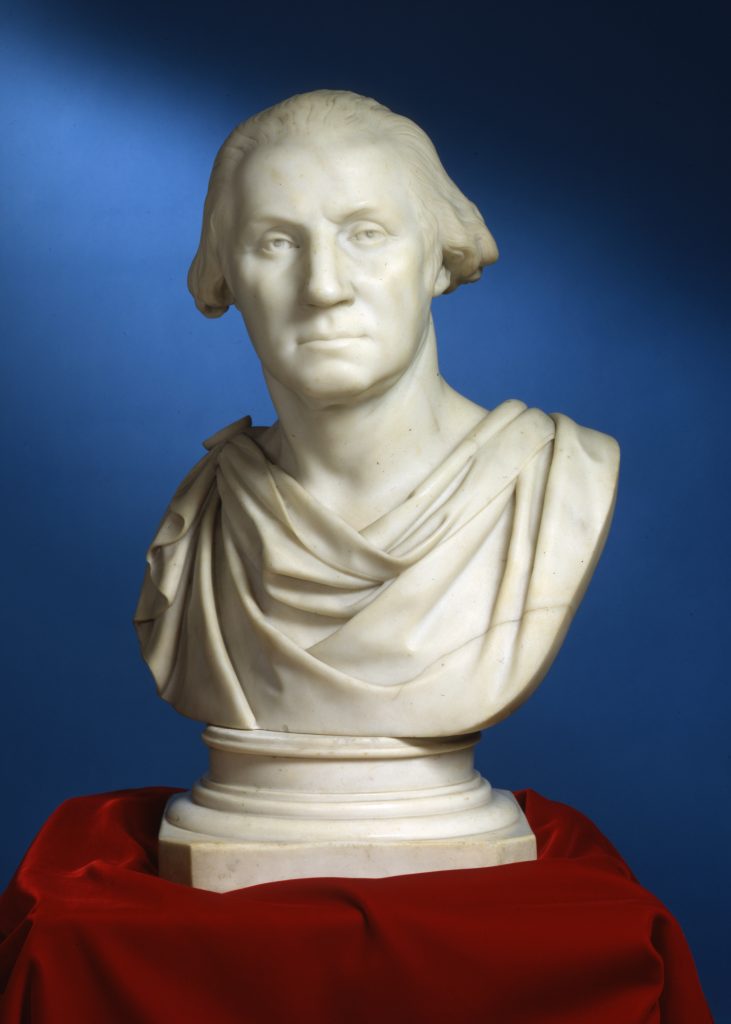
George Washington
Attributed to Thomas Crawford, sculptor; after Jean-Antoine Houdon, artist
Mid-19th centuryThe Society of the Cincinnati, Gift of Henry Benning Spencer, Society of the Cincinnati in the State of Georgia, 1945
Portraits of George Washington were everywhere in the early republic. Among the finest were portrait busts, typically derived from the portrait sculpted from life by French sculptor Jean-Antoine Houdon in 1785. By the middle of the nineteenth century they were on public view in every city in the country. This finely crafted example is attributed to Thomas Crawford (1814-1857), a major American sculptor of the second quarter of the nineteenth century.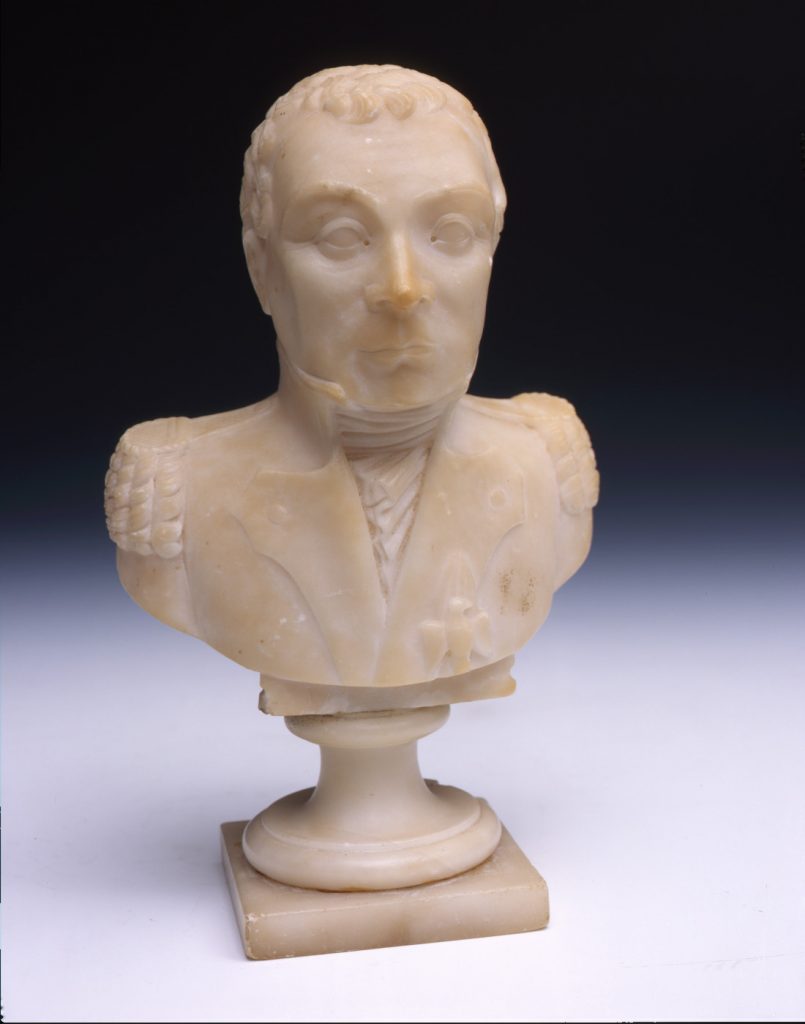
Marquis de Lafayette
ca. 1825-1830The Society of the Cincinnati, Museum Acquisitions Fund purchase, 2005
Lafayette’s youth and unqualified devotion to the American cause made him one of the most celebrated officers of the Revolutionary War. His name was bestowed on counties and towns in nearly every state and on thousands of American children over more than a century. This alabaster portrait bust was probably made in Europe for the American market and sold during the last part of Lafayette’s triumphal visit to the United States or shortly after his return to France.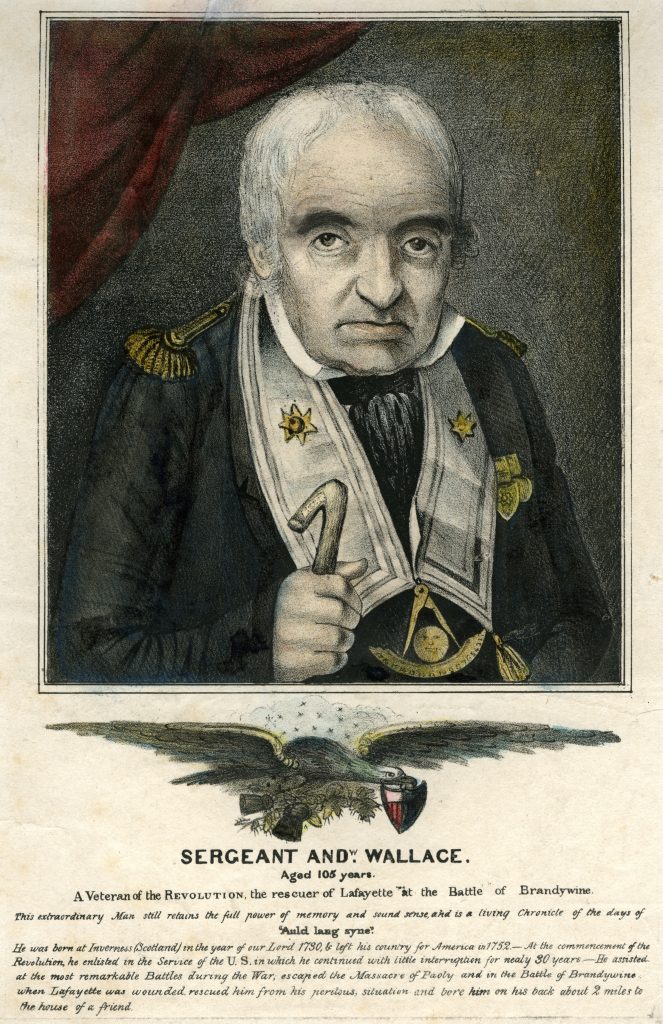
Sergeant Andw. Wallace, Aged 105 Years, a Veteran of the Revolution, the Rescuer of Lafayette at the Battle of Brandywine
ca. 1835The Society of the Cincinnati, The Robert Charles Lawrence Fergusson Collection
Among the elderly veterans of the Revolutionary War, Andrew Wallace became a minor folk hero after he applied for a pension in 1833 and his story came to popular attention. Wallace enlisted in the Pennsylvania Line at the beginning of the Revolutionary War. He was said to have assisted the wounded Lafayette from the field at Brandywine and to have fought at Germantown, Monmouth, Stony Point, Cowpens, Eutaw Springs and Yorktown. He died in January 1835 in his 105th year.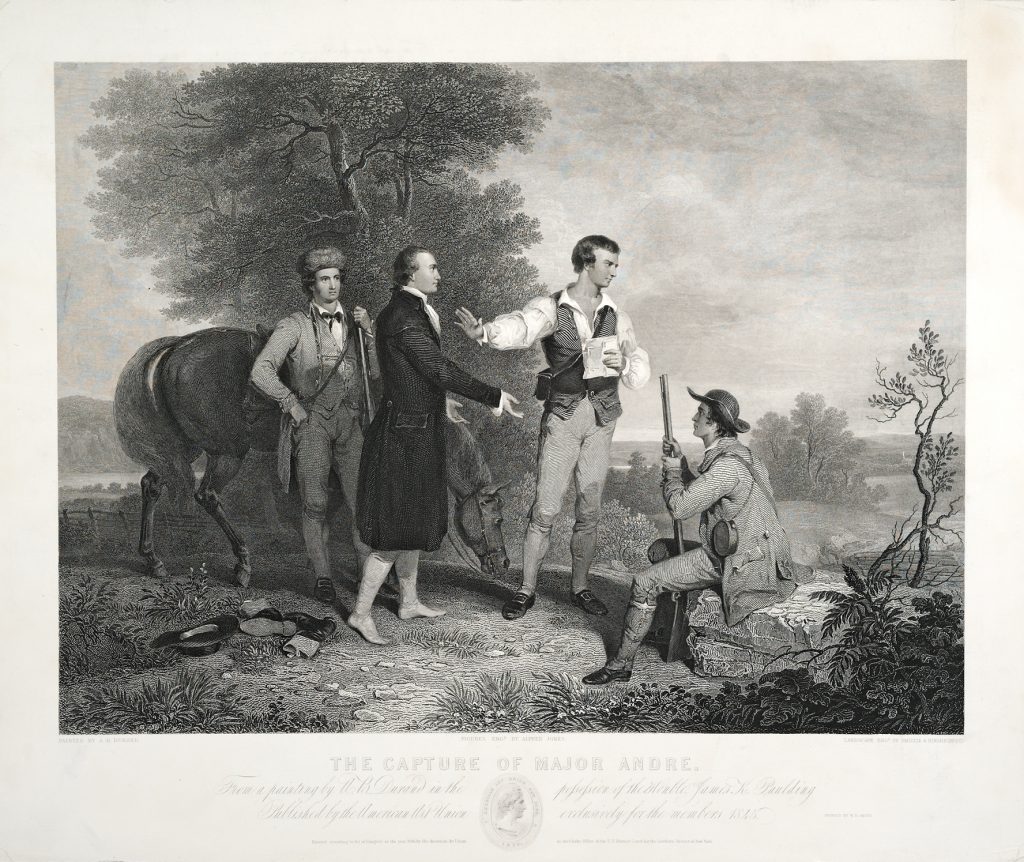
The Capture of Major Andre
Alfred Jones, James Smillie and Robert Hinshelwood, engravers; after Asher Brown Durand, artist
New York: Published by the American Art Union, 1845The Society of the Cincinnati, The Robert Charles Lawrence Fergusson Collection
In popular memory, John Paulding, Isaac Van Wart and David Williams—the three militiamen who captured British major John André and revealed Benedict Arnold’s treason—were common men of incorruptible virtue. Through prints like this one, the scene became as familiar in the middle of the nineteenth century as Trumbull’s depiction of the Battle of Bunker Hill.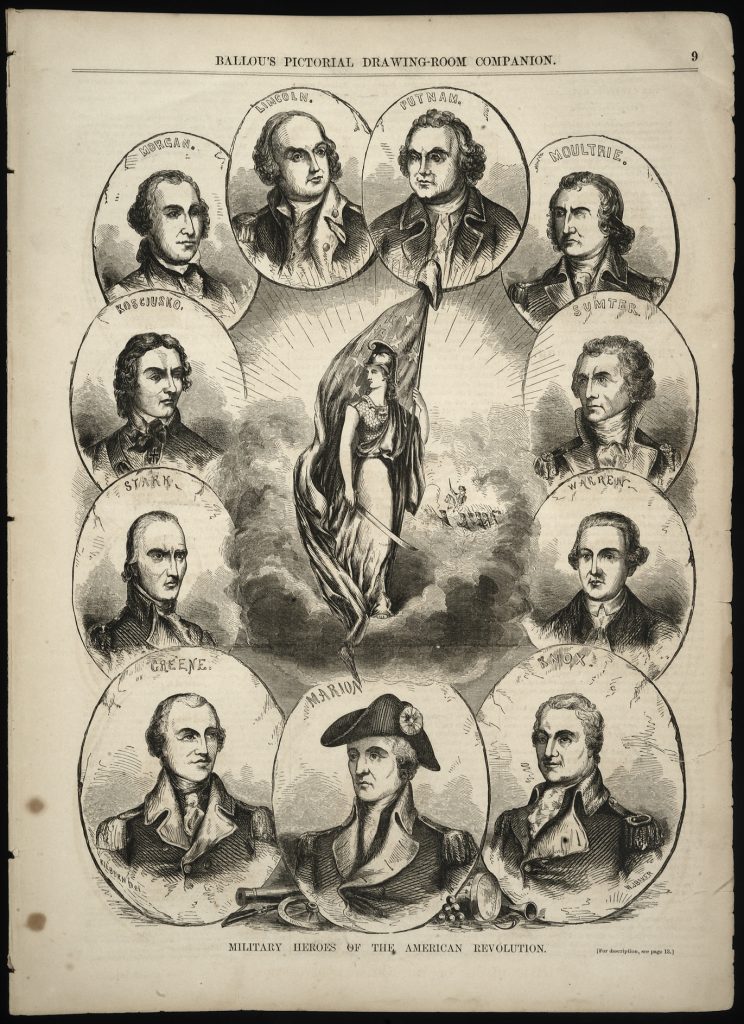
“Military Heroes of the American Revolution”
William J. Baker, engraver; after Lawrence Kilburn, artist
Ballou’s Pictorial Drawing-Room Companion, ca. 1850The Society of the Cincinnati, Gift of Benjamin Lincoln, 1986
Colorful characters—Francis Marion, Israel Putnam, William Moultrie, Thomas Sumter, John Stark and Daniel Morgan—are portrayed with the martyred Joseph Warren, Polish volunteer Tadeusz Kosciuszko and local favorite Benjamin Lincoln in this gallery of Revolutionary War heroes published in Boston at mid-century.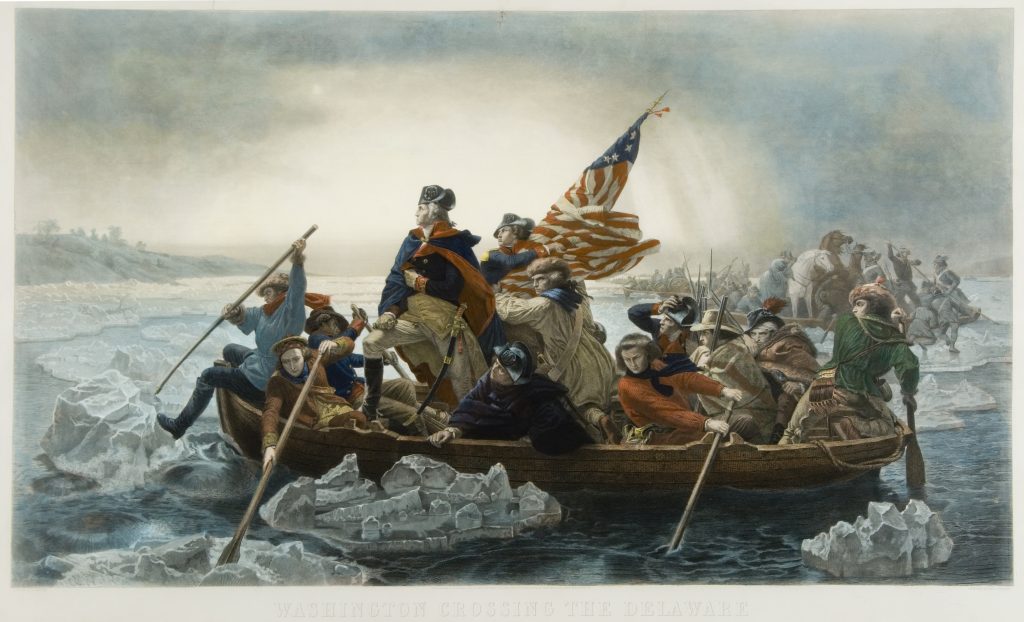
Washington Crossing the Delaware
Paul Giradet, engraver; after Emanuel Gottlieb Leutze, artist
New York, Berlin and Paris: Goupil & Co., 1853The Society of the Cincinnati, The Walter P. Swain, Jr., Memorial Collection; Gift of Philip S. Keeler, Jr., 1998
German artist Emanuel Leutze (1816-1868) completed Washington Crossing the Delaware in 1851. It was widely reproduced in fine engravings, inexpensive prints and simple illustrations in books and periodicals and soon rivaled, and ultimately surpassed, Trumbull’s Battle at Bunkers Hill as the most widely recognized image of the Revolutionary War.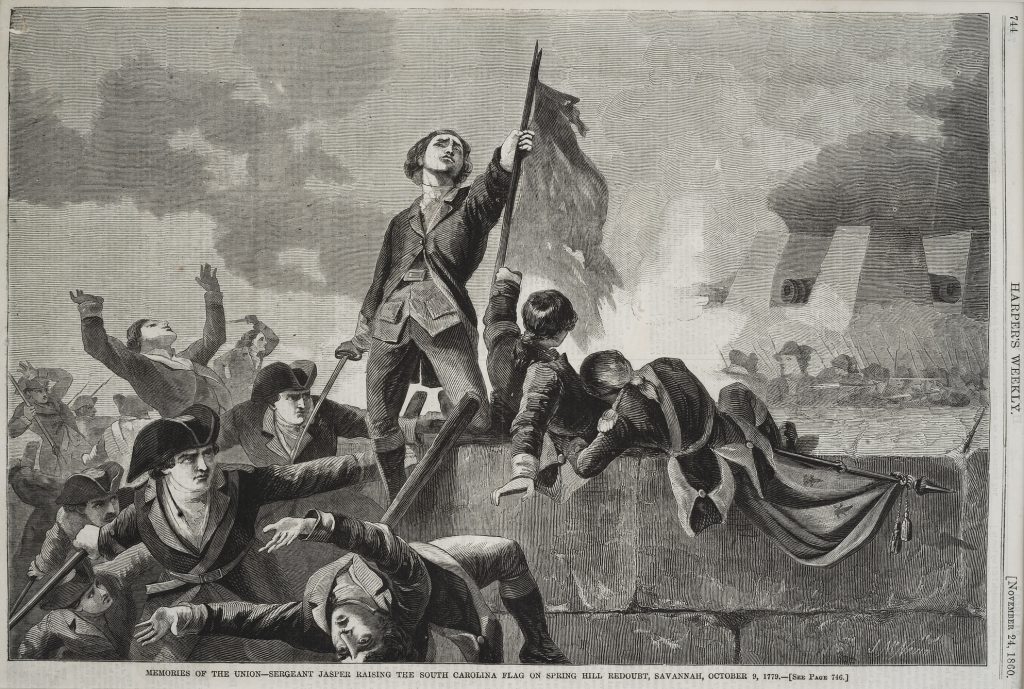
Memories of the Union – Sergeant Jasper Raising the South Carolina Flag on Spring Hill Redoubt, Savannah, October 9, 1779
John McNevin
Harper’s Weekly, November 24, 1860The Society of the Cincinnati, The Robert Charles Lawrence Fergusson Collection
Now little remembered outside South Carolina and Georgia, Sergeant William Jasper and his friend, Sergeant John Newton, figured prominently in Weems’ Life of Marion and were among the best-known heroes of the Revolutionary War in the nineteenth century. Their names are spread across the South and Midwest. Thousands of American boys were named for Jasper, Newton or both. William Jasper participated in the French-American assault on Savannah on October 9, 1779, and was mortally wounded after planting the colors of the Second South Carolina Regiment on Spring Hill Redoubt.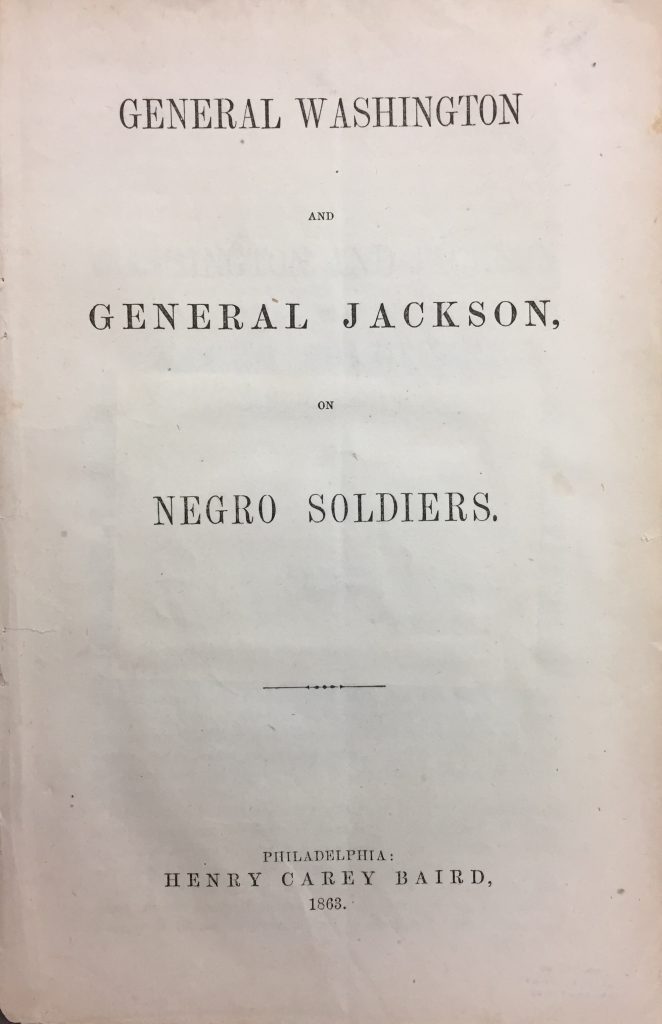
General Washington and General Jackson, on Negro Soldiers
Philadelphia: Henry Carey Baird, 1863The Society of the Cincinnati, The Robert Charles Lawrence Fergusson Collection
Northern advocates of recruiting African-Americans to serve in the Union army erroneously asserted that George Washington had supported recruiting African-American soldiers for the Continental Army. “We are in the midst of a great war for the existence of free institutions,” the author of this pamphlet wrote. “If … our grandfathers in 1776, did not hesitate to put muskets into the hands of Negroes, why should we?”